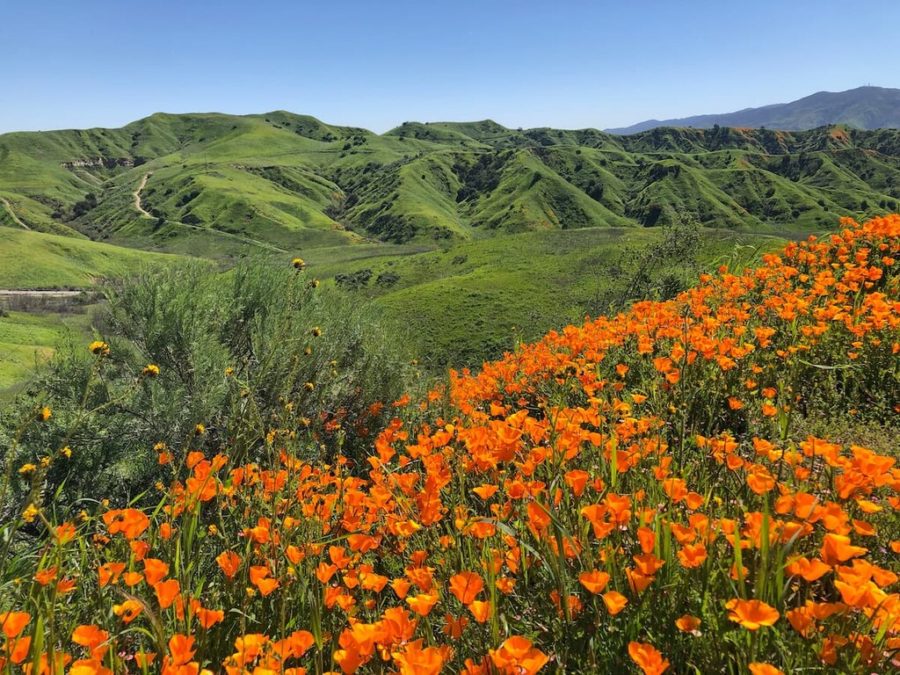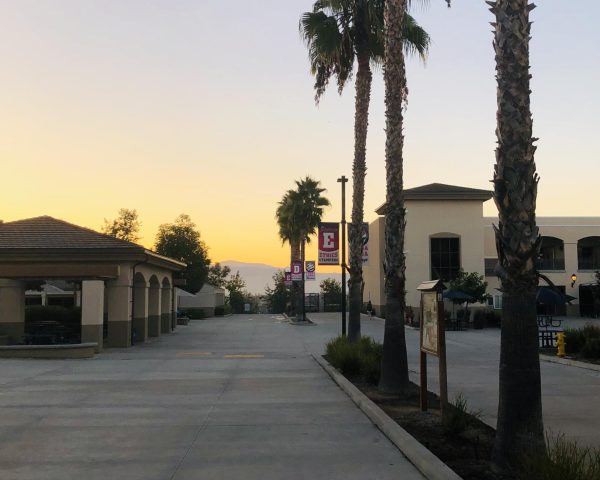Scenic Spots To See California’s Superbloom
April 12, 2023
Following California’s rainy fall and winter, wildflowers have bloomed throughout the state. Bright orange poppies cover the hillsides of the so-called Golden State and add color to the once-arid landscape. This natural phenomenon, which is called a superbloom, has not occurred since the spring of 2019 because of drier weather conditions. This year, however, the higher-than-average precipitations have allowed wildflowers to come back in bloom. In fact, this year’s superbloom is so spectacular that it can be seen from space (NASA).
I am super excited to see all the wildflowers this spring!
— Megan Chou (12)
There are numerous spots that people can visit to see these beautiful wildflowers. Megan Chou (12) explains how she is “super excited to see all the wildflowers this spring!” Before you go visit local spots, you should ensure to research whether the place you plan to visit is open to tourists. Some scenic stops have closed down to tourists because of overcrowding and the destruction of wildlife. For example, Walker Canyon in Lake Elsinore is closed to tourists this spring because, in 2019, tourists trampled wildflowers as they swarmed the hiking trails to snap photos of the picturesque landscape. In addition to the damage to wildlife, tourists also parked their vehicles on the highways, making it difficult for local residents to commute from place to place (KTLA).
Here are a few of the best locations in Southern California to see the superbloom this year!
Chino Hills State Park: This state park borders Yorba Linda and contains over 90 miles of hiking trails. Visitors are welcome to hike, bike, or horseback ride on trails as they explore the wildlife of the park. Visitors are recommended to visit Bane Ridge Trail for the best wildflower viewing experience (Chino Hills).
Antelope Valley California Poppy Reserve: This reserve is located in the western Mojave Desert and contains eight miles of hiking trails. Fields are covered in pink, orange, and yellow flowers that are best viewed from Antelope Trail North Loop and Kitanemuk Vista Point (California Department of Parks and Recreation).
Anza-Borrego Desert State Park: This park is 2 hours east of the coast of San Diego and contains badlands, cacti, and oases. The protected region was named after Spanish explorer Juan Bautista de Anza and is home to “borrego” (bighorn sheep). In addition to wildflower blooms, this park also experiences a cactus bloom (Visit California).
This year’s superbloom is one that you will not want to miss! Regardless of where you may choose to visit to see this natural phenomenon, make sure you are mindful of your environmental impact to protect wildlife for future generations to enjoy.











































